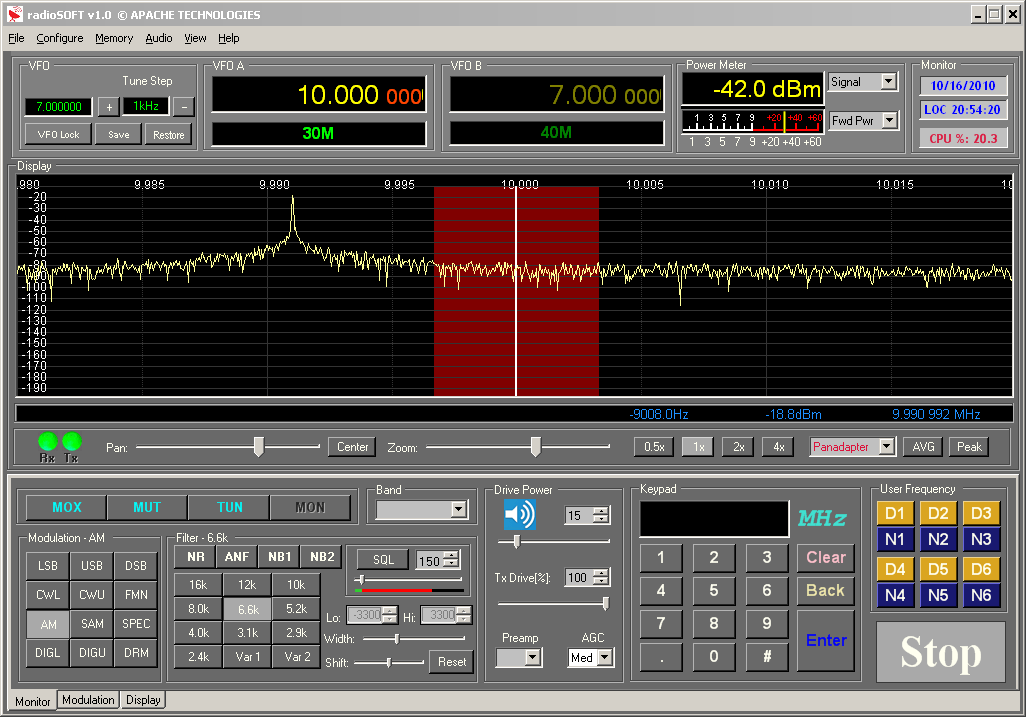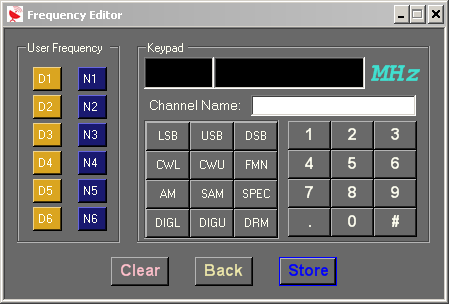radioSOFT 1.0
A radioSOFT 1.0 set with an all-inclusive software repertoire can be used in any
mode, anywhere in the world. Changing the service type, the mode, and/or the modulation
protocol involves simply selecting and launching the requisite computer program,
and making sure the batteries are adequately charged if portable operation is contemplated.
- radioSOFT 1.0 is next generation poartable radio system providing secure
& reliable, voice & data communications for mobile military and amateur users.
- Supports the HF frequency from 1.8 MHz to 65.0 MHz & the VHF frequency range from
135.0 to 185.0 MHz.
- Allows recieve & transmit in all modulation schemes viz. SSB, AM, FM, CW and Digital
Data.
- Dynamically compute the required filters. Provides Automatic notch filter, noise
reduction, noise blanker and sqletch etc.
- Supports 3/10-band Euqalizer and the Multi-Receive capabilities to demodulate two
different signals in the same passband.
- Provides 128 bits AES (Advanced Encryption Standard).
The most significant asset of radioSOFT 1.0 is versatility. The wireless systems
employ protocols that vary from one service to another. Even in the same type of
service, for example wireless fax, the protocol often differs from country to country.

Specifications
Frequency coverage
- HF: 1.8 MHz to 65 MHz
- VHF: 135 MHz to 185 MHz
|
Power requirement
- 13.8 ± 10% V dc
- Receive 2.8 A (max audio)
- Transmit 3.5 A (max audio)
|
Modes of operation
- SSB, CW, AM, FM, RTTY, Packet etc
|
Spurious-signal and harmonic suppression
- less than 55 dB on HF & less 65 dB on 50 MHz
|
Receiver
- SSB/CW sensitivity: 500 Hz bandwidth
- 14 MHz MDS, preamp off/on: –123/–133 dBm
|
Transmitter
- Power output 1 to 100 W PEP CW, SSB, AM 1-25 W
|
SSB carrier suppression
|
Undesired sideband suppression
|
Third-order inter-modulation distortion (IMD) products
- less than 33 dB below PEP at 14.2 MHz
|
Size (height, width, depth) & Weight
- 1.8 × 12.3 × 12.3 inches
- 3.4 Kg approx
|




The radioSOFT HW consists of a receiver and/or a transmitter, where each has the
following properties, respectively:
(a) the received signal is digitized and then processed using software-programmable
digital signal processing techniques (digitization may occur at the rf, IF, or baseband);
(b) the modulated signal to be transmitted is generated as a digital signal using
software-programmable digital signal processing techniques; the digital signal is
then converted to an analog signal for transmission (the conversion to analog may
occur at baseband, IF, or rf); and
(c) a key element of these radios is that software programmability allows easy changes
of the radio's fundamental characteristics such as modulation types, operating frequencies,
bandwidths, multiple access schemes, source and channel coding /decoding methods,
frequency spreading/despreading techniques and encryption/decryption algorithms.